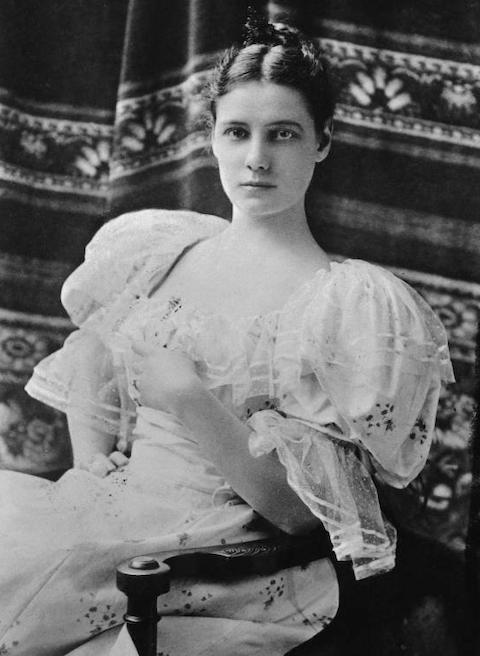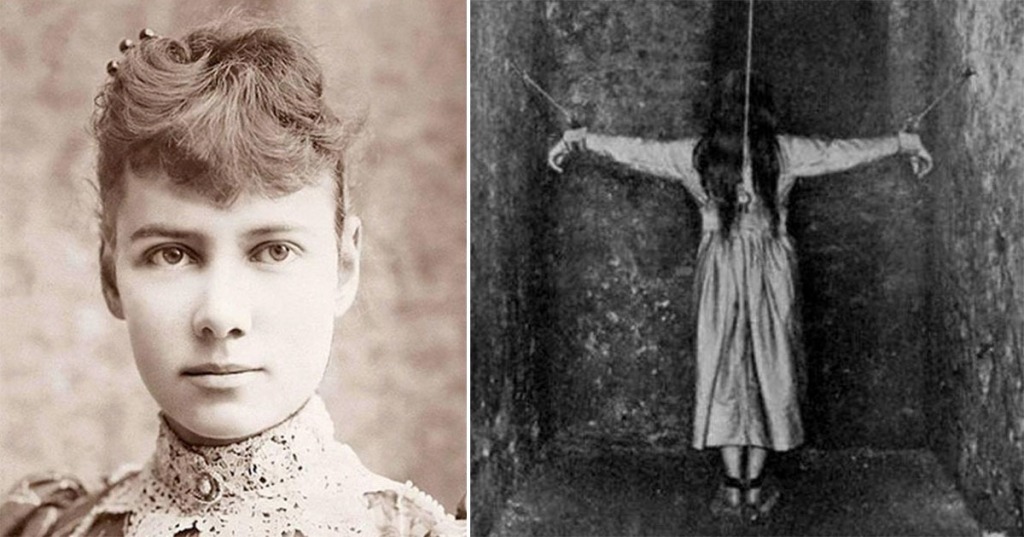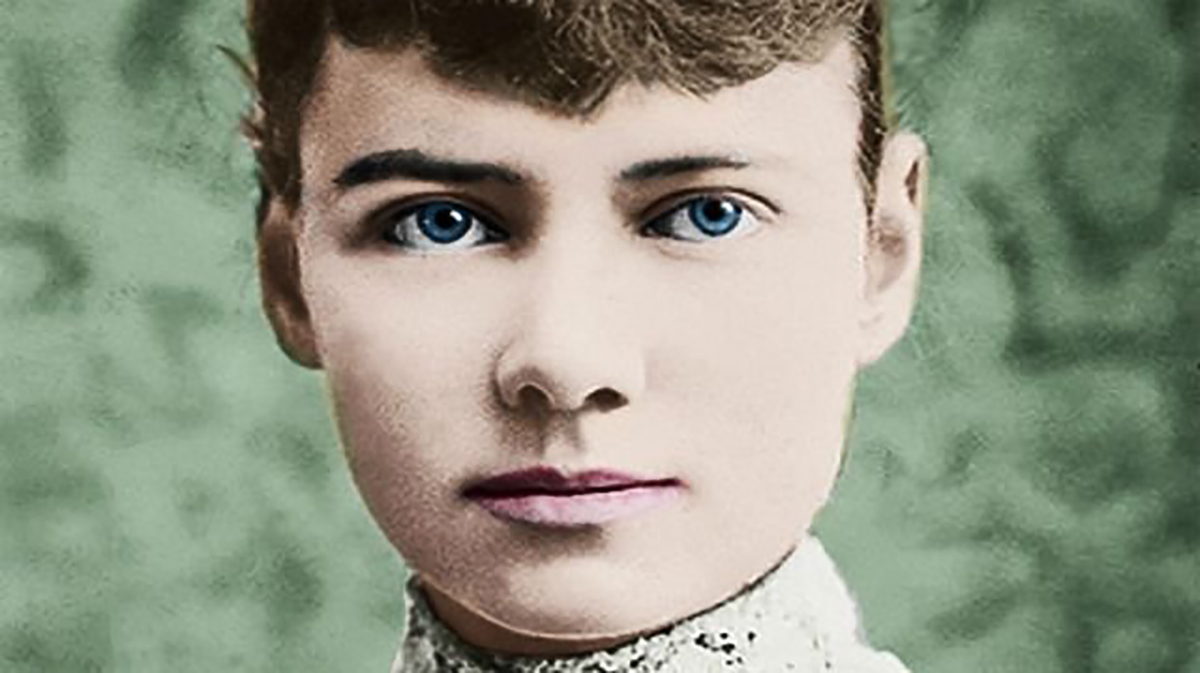Born May 5, 1864, Elizabeth Jane Cochran was one of fifteen children born to Michael Cochran, and two wives. Michael died in 1870 leaving a modest legacy. It didn’t amount to much, split fifteen ways.
As a teenager in western Pennsylvania, Elizabeth adopted an “e” believing that “Cochrane” sounded more sophisticated. She enrolled at the Indiana Normal School in 1879 (now Indiana University of Pennsylvania) but dropped out after one semester, for lack of funds. In 1880 her mother moved the family, to Pittsburgh.
According to an article in the Pittsburg Dispatch entitled “What girls are for” the answer appears to be, not very much. Making babies and keeping house. Elizabeth didn’t appreciate that and wrote to the paper, to say so. She signed her letter, “Lonely Orphan Girl”.

If writing well is the sign of an organized thought process, the mind of Elizabeth Cochrane was in good working order. Impressed with the anonymous letter, Editor George Madden ran an advertisement asking that the writer, identify herself.
That she did. Madden offered the opportunity to write a piece for publication, under the same pseudonym. Cochrane called that first piece “The Girl Puzzle”, describing how divorce effected women and arguing for reform of marital laws.
Madden was even more impressed and hired Elizabeth, full-time. In those days, women who wrote for newspapers generally did so, under a pseudonym. The Editor suggested “Nelly Bly” after the subject of a popular minstrel song, from 1850. Cochrane liked “Nelly” but her editor spelled it with an ‘ie’.
Nellie Bly would go on to be one of the most famous journalists of the age.
She first came to widespread notice with a series of investigative articles, focused on poor working conditions and the plight of female factory workers. Factory owners complained. Bly was reassigned to a role more typical of female reporters: Gardening. Society. Fashion.

She didn’t want any of it. Still only 21, she wanted “to do something no girl has done before.” She traveled to Mexico and became a foreign correspondent, writing about the Mexican people and criticizing the dictatorship, of President Porfirio Diaz.

Stung by what she had written, Mexican authorities threatened to throw her in jail. Bly was forced to flee. Back in Pittsburg, it wasn’t long before she’d had enough of theater and arts reporting. She resigned her job in 1887 and moved to New York.
This was the age of lurid headlines, of sensational if not always accurate stories and homeless street waifs called “Newsies“, hawking newspapers: “Extra Extra, read all about it!” Within the next five years, San Francisco publisher William Randolph Hearst would buy crosstown rival New York Journal sparking a newspaper war and a new style of news we now call “Yellow Journalism“.

Penniless after four months without income, Cochrane walked into the office of New York World publisher, Joseph Pulitzer. Pulitzer had purchased the company four years earlier promising to root out corruption, expose fraud and ferret out public abuse, at all levels.
Bly was hired to cover theater and the arts but the pair soon concocted an undercover assignment. Nellie Bly would feign insanity, with the aim of being committed to the notorious women’s insane asylum on Blackwell’s Island.

It was a dangerous ruse but it worked. The “pretty crazy girl” fooled the New York press and mental health “experts” alike, culminating in Bly’s incarceration at Blackwell’s Island. She was released at the behest of the New York World, ten days later.
Bly’s exposé was a sensation. First in a series of stories and then in a book entitled Ten Days in a Madhouse, Nellie Bly told tales of torture, of ice cold baths in used and filthy water, rancid food and the rats, vermin and brutality suffered by women she was convinced were every bit as sane, as herself.

Public outrage prompted a grand jury investigation culminating in an $800,000 increase in public funding to the Department of Public Charities and Corrections.
Bly’s caper sparked a new form of “stunt journalism”, a new breed of female reporters with secret identities like “Florence Noble” and “Dorothy Dare” tackling subjects like disaster victims, the plight of factory workers and other subjects previously considered “unfit for ladies”.
Every major newspaper in the nation wanted a “stunt girl” on the staff.
In 1872, novelist Jules Verne published the fictional tale of the gambler Phileas Fogg and the trip he went on, to win a bet. The story was called Around the World in 80 Days. In 1888, Nellie Bly pitched the same trip to her editor. For real.

With two days’ notice, Nellie Bly boarded the Hamburg America Line steamer Augusta Victoria in November 1889 to begin her 25,000-mile adventure. She took an overcoat, the dress she was wearing, a few changes of underwear and a travel bag with a few essentials. A bag with £200 in English bank notes, some gold and American currency hung around her neck.
Unknown to Nellie at this time, Cosmopolitan magazine was sponsoring reporter Elizabeth Bisland to take the same trip, in the opposite direction.
She departed the same day.
New underwater cables enabled Bly to send short progress reports though longer dispatches had to travel by mail. From her first stop in England she traveled to France where she met Jules Verne himself and on to Brindisi, the Suez Canal, Ceylon and the Far East. She visited a leper colony in China. In Singapore, she bought a monkey.
The New York World sponsored a “Nellie Bly Guessing Match”. Who could predict to the second, the journalist’s return. The grand prize was an all-expense paid trip to Europe. Spending money was tossed in, later on. A rough Pacific passage on board the Steamer RMS Oceanic put the trip two days behind schedule but Pulitzer’s newspaper made that up, hiring a private train from San Francisco.

Nellie Bly arrived in New York on January 25, 1890 at 3:51pm, besting Phileas Fogg’s time, by eight days. Over at Cosmo, Bisland was still crossing the Atlantic, with 4½ days to go.
At 31, Nellie Bly married 73-year old metal container manufacturer Robert Seaman in 1895, and left journalism. Seaman died in 1904 and, for a time, Elizabeth was one of the leading female industrialists, in the country.

She ran the company as “a model of social welfare, replete with health benefits and recreational facilities“, according to biographer, Brooke Kroeger.
“But Bly was hopeless at understanding the financial aspects of her business and ultimately lost everything. Unscrupulous employees bilked the firm of hundreds of thousands of dollars, troubles compounded by a protracted and costly bankruptcy litigation“.
Back in journalism, Bly traveled to Europe to cover the Great War. She was the first woman and one of few foreigners to visit the war zone between Austria, and Serbia.
In 1913, Nelly Bly covered the first suffragist parade in Washington. She predicted women would have the vote, by 1920.

The 19th Amendment giving (white) women the vote was certified on August 26, 1920, by US Secretary of State Bainbridge Colby.
In practice, voting restrictions against non-white men now extended to non-white women. The crusade to protect the voting rights of ALL American citizens would last, another 40 years.



Wow, what a story! About the only think I knew of her was her name- thanks for all of the details!
LikeLiked by 1 person
The woman was so far ahead of her time in so many ways.
LikeLiked by 1 person
….just a really great read about a really great person
LikeLiked by 1 person
I always said that weak women bore me. This one, I would have found most interesting.
LikeLiked by 1 person
Reblogged this on Dave Loves History.
LikeLiked by 1 person